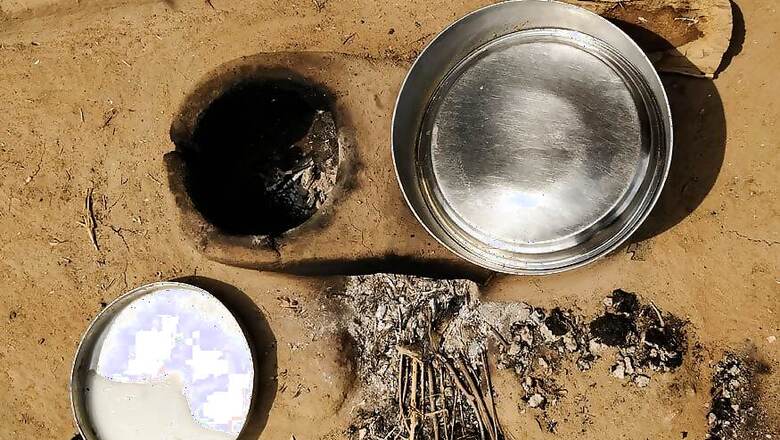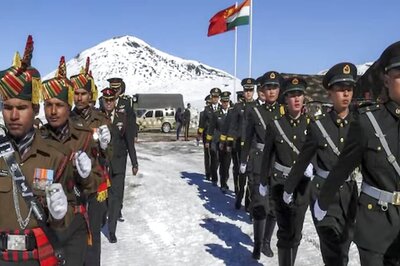
views
New Delhi: The three Lok Sabha constituencies in Jharkhand that went to polls in the fourth phase on Monday are plagued by several issues ranging from environment to non-implementation of welfare schemes. The three seats — Palamau, Chatra and Lohardaga — are also known to be hit by Left-wing extremism.
Even as the state continues to suffer from starvation deaths, delayed wage payments, malnourishment, lack of government schools, discontinuation of pensions, tribal lands, Aadhaar-related and environmental problems, bad governance has only worsened the situation.
The state also ranks second in hate crimes, particularly, religion-driven hate crimes, according to IndiaSpend Hate Crime watch.
Jharkhand holds 40% of the country’s mineral wealth, yet its economic development has not helped its people. Poor resource management, subsistence and illegal mining have led to air and noise pollution, contamination of water, and above all, changes in modes of land use due to reduction of suitable area for agriculture. These issues are ruining the state’s health and that of its people.
Jharkhand, a relatively young state that was formed in 2000 after its separation from Bihar, has essentially been a BJP bastion. The saffron party had dominated the last two general elections (2009 and 2014).
Government think-tank Niti Aayog, in its report titled Transformation of Aspirational Districts, 2018, had categorised 100 backward districts based on 49 developmental indicators. Chatra, Palamau and Lohardaga were ranked 59th, 60 and 65th, respectively in the report.
The Drought-Hit Constituency
Chatra, a general category constituency that witnesses less rain, is also the largest parliamentary constituency in Jharkhand in terms of area.
The district recorded rain shortage of 40% and above during the 2018 monsoon season. Even as farmers in the state practise mono-cropping due to less availability of irrigation facilities, a necessity for rabi crops, Chatra, a rain-dependent state, has been hit severely.
Under the Mahatma Gandhi National Rural Employment Guarantee Scheme (MGNREGS), the wages at Rs 168 per day, continue to be a big issue. This is much less than the Jharkhand government’s minimum wage of Rs 239 per day.
In May 2016, the state government ordered for the construction of around six lakh farm ponds (also known as 'dhobhas') by 2017. The initial target that was set called for 20 farm ponds to be built in every one of the 31,1814 revenue villages of the state.
This meant that the number of farm ponds in the state could have been 62,36,280. To speed up the process, a letter written by the MGNREGA commissioner to all the deputy commissioners of the state in May 2016 ordered for the the construction of five of these farm ponds in every village by the end of June 2016.
This could have taken the total number of farm pond in the state to 159,070. However, at the end of March 2017, only 40 percent of this target was completed
The count of electors in the constituency this election season stands at 14,22,805, which include 52.6% men, 47.38% women and four transgenders. Of them, 22,207 electors fall in the 18-19 age bracket.
A total of 26 candidates are contesting from this seat, of whom 16 are independents. In the 2009 Lok Sabha election, Inder Singh Namdhari, an independent candidate, had won from this seat.
This is also the parliamentary constituency that had the second-highest number of independent candidates contesting in the state. This election, the fight is among the BJP’s Sunil Singh, the Congress’ Manoj Yadav and independent candidate Yogendra Yadav.
Recently, Yogendra Yadav, president of the Swaraj India party, was seen campaigning for his namesake, an advocate contesting as an independent. In his speech, he urged the locals to “vote for honesty and sincerity”.
Rich in Bauxite, Poor in Governance
Lohardaga, the Scheduled Tribe constituency, came in to existence in 1983 after the district of Ranchi was split into Lohardaga, Ranchi and Gumla.
This district is known for mines and bauxite. According to the Jharkhand government website, this district has the approval of mining of about 11 tonnes of bauxite a year.
Hence, the prevalence of large-scale projects related to minerals and dams are high here.
The constituency has often remained in news for 'forceful evictions' of its tribal community from forest dwelling areas due to various developmental projects.
According to a 2011 report, titled Development Projects versus. Internally Displaced Populations in India: A Literature Based Appraisal, nearly 50 million people were ‘displaced due to development projects’ over 50 years in India.
Of them, close to 21 million people were displaced due to dams, mines, industrial developments and others. They were referred to as ‘development’-induced Internally Displaced Persons.
Development in the constituency has also become a casualty in this remote areas of the state. As per National Family Health Survey-4, the rate of institutional birth in Lohardaga is 71.8% against the national average of 78.9%. Similarly, against the national average of 87.6% household with improved drinking water source, Lohardaga stands at 71.2%.
Here, the total number of electors are 1,227,510, of whom 51% are men, 49% are females and seven belong to the other category. As many as 16,495 electors are in the age group of 18-19 years. Fourteen candidates are in fray from this seat.
Displacement Concerns
Palamau, another Scheduled Tribe constituency is known for its tiger reserve, which was one of the nine original tiger reserves in India.
One of the major issues here has been the construction of a dam. The proposed dam on the North Koel river aims to provide irrigation to 1,11,521 hectares of land annually. This is meant to cover the most backward and drought-prone areas of Jharkhand and Bihar.
Initiated in 1972, the project was brought to a halt in 1993 by the Bihar forest department due to environmental concerns.
Concerns over portions of the tiger reserve and Betla National Park getting submerged were raised. In June 2017, after revising certain conditions, the National Wildlife Board cleared the project.
This project, being built at an approximate cost of over Rs 1600 crore, is likely to take another 30 months for completion. The Centre will bear 60% of the cost, while the remaining 40% will be borne by the states.
In January 2019, villagers fearing displacement by the project, took part in a rally to meet Prime Minister Narendra Modi, who was there to lay the foundation of the project. The villagers, who were demanding compensation, were arrested. They were released only the function came to an end.
In 2009, in neighbouring Chhattisgarh, Adivasis and other forest communities suffered displacement due to the Achanakmar Tiger Reserve. Neither were the affected receive full compensation nor were they relocated properly under the Project Tiger Relocation scheme.
The constituency has a total electorate of 18,76,378 this election, including 54% men and 46% women. Of whom 38,133 voters are first-time voters. As many as 19 candidates are in fray from this seat.
Polls in Jharkhand
In 2014, the BJP won 12 of the 14 seats, including the three that went to polls on Monday. The remaining two constituencies were won by the Jharkhand Mukti Morcha (JMM). Though the Congress had a 13% vote share (and ranked second), it didn’t manage to open its account.
In 2009, the saffron party had won eight of the 14 seats, including Lohardaga.
At present, fighting the battle are two major alliances in the state. In alliance with the Congress are the JMM, Jharkhand Vikash Morcha-Prajatantrik (JVM-P) and Rastriya Janata Dal (RJD).
While the grand old party has fielded candidates in seven seats, the JMM has 4 contenders, JVM(P) two and RJD has a love candidate.
Fighting against them is the ruling BJP in alliance with the All Jharkhand Students Union (AJSU) with the saffron party contesting from 13 seats.
Modi and BJP president Amit Shah have addressed a rally each in the state. Despite the drubbing in the last general election, no prominent Congress leader has campaigned yet in Jharkhand.













Comments
0 comment